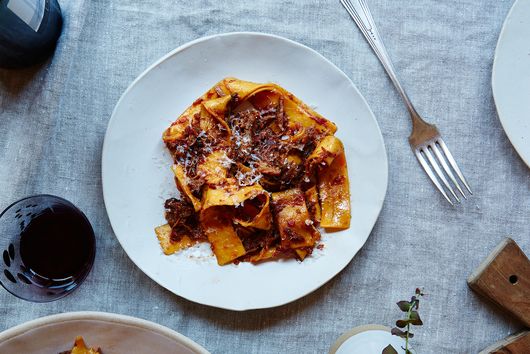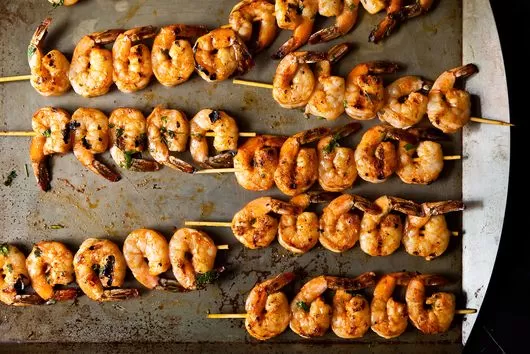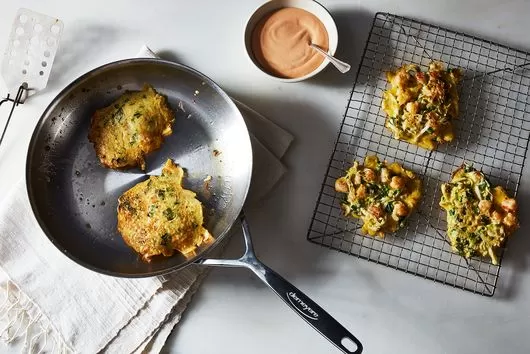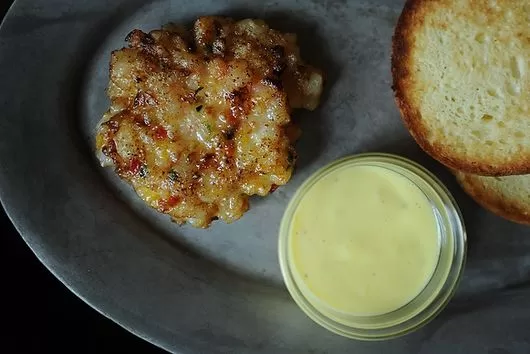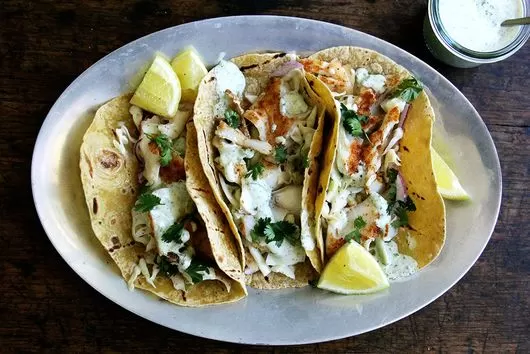Andy Ward & Jenny Rosenstrach's Pork Shoulder Ragu
PREP TIME
5 minutes
COOK TIME
4 hours 19 minutes
SERVES
6
Ingredients
2 pounds
to 2 1/2 pound boneless pork shoulder roast (up to 2 1/2 pounds), tied with twine if there are any loose pieces
1
small onion, chopped
1
garlic clove, minced
Salt and pepper
2 tablespoons
olive oil
1
small pat butter
1
28-ounce can whole tomatoes, with juice
1 cup
red wine
5
sprigs fresh thyme
5
sprigs fresh oregano
1
Small handful of fennel seeds
1 tablespoon
hot sauce, for smokiness (Andy used Trader Joe's Hot Chili Sauce, but Sriracha and Tabasco both work great, too)
1 pound
Pappardelle
1 handful
Freshly grated Parmesan
Ingredients
- Preheat oven to 325° F. Liberally salt and pepper the pork roast. Add olive oil and butter to large Dutch oven and heat over medium-high until butter melts, but does not burn. Add pork roast to pan and brown on all sides, about 8 to 10 minutes in all.
- Add the onion and garlic and saute for 1 minute. Add tomatoes, wine, thyme, oregano, fennel, and hot sauce and bring to a boil. Cover, and put in oven.
- Braise for 3 to 4 hours, turning every hour or so. Add more liquid (water, wine, or tomato sauce) if needed. (The liquid should come to about 1/3 of the way up the pork.) Meat is done when it’s practically falling apart. Put on a cutting board (remove the sprigs of herbs at the same time) and pull it apart with two forks, then add back to pot and stir.
- Cook 1 to 2 pounds pasta according to package directions. When it’s is ready, put into individual bowls and top with ragu and lots of Parm. Alternately, toss the pasta with the ragu and a bit of pasta cooking water, as needed, and top with Parm.


